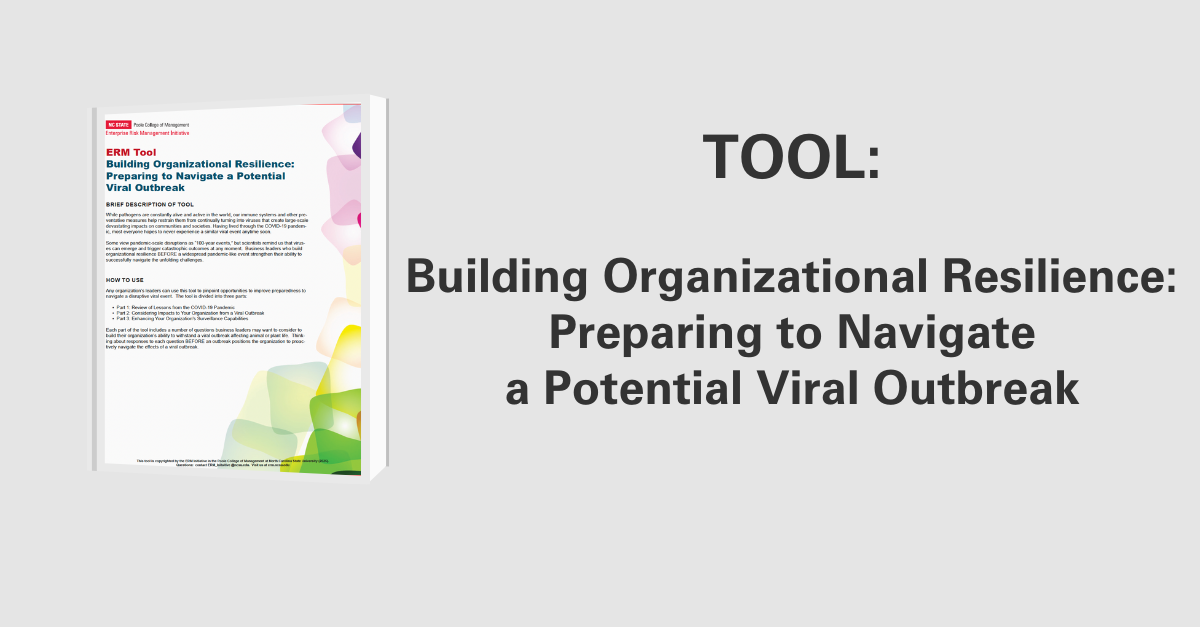Managing Levels of Innovation Risk
Issues Related Managing Innovation Risks
Innovation in and of itself presents challenges to companies that strategize to gain more market share or to stimulate growth. As executives seek to produce innovative products or offer innovative services, they often run into problems of finding an optimal means for effectively managing innovation risk. The article, “Managing Your Innovation Porfolio” by the Harvard Business Review examines the realities of risks associated with managing innovation and provides helpful “food-for-thought” ideas about effective ways to frame an organization’s approach to managing innovation risk.
The Challenge
The pressure to have a sound risk management system surrounding innovation is heightened given the recent trends that include but are not limited to:
- Market expectations
- Global competition
- Volatility in structural change
Still, executives are often not pursuing the most efficient way to manage innovation with the objective of producing the highest revenue growth. Additionally, upon the realization that their total innovation portfolio has yielded a low margin, management often responds in irrational ways. To put it simply, companies find out that their innovation investment was not worth the time and resources that were pumped into the innovation pipeline. To substantially increase returns, many companies act rashly and take on more innovation risk than their risk appetite.
Those businesses that are successfully navigating innovation risks have three aspects of their innovation strategy in common. They
- Are able to clearly define their innovation ambitions.
- Strike the right balance between core, adjacent, and transformational initiatives.
- Implement tools and capabilities that address risks related to specific initiatives by managing them as an integrated whole.
Defining Innovation Ambition Levels
Companies that are successfully managing innovation, diversify their innovation portfolio by balancing their mix of innovation across three levels of innovation ambitions:
1. Core Innovation Ambitions – These include initiatives that are incremental and enhancements to core offerings, such as new additions to existing products or services that utilizes assets the company already has in place (i.e. a small risk undertaking).
2. Adjacent Innovation Ambitions– These expand the existing business by leveraging what the business already does well (part core initiative) into adjacent new spaces or uses.
3. Transformational Innovation Ambitions – These initiatives represent those viewed as breakthroughs or creations of entirely new offerings, businesses, or markets (i.e. a very high level of risk to manage).
A key to managing innovation risk is understanding the underlying objectives or ambitions being sought by innovation and then considering the organization’s portfolio of innovations across these three levels. Knowledge of innovation ambitions helps managers better understand the nature of their underlying risk-taking in light of their appetite for innovation risks. Naturally, transformational innovations bear greater risks than the other levels. Managers need to consider the associated risks in light of the level of innovation risk tolerance their stakeholders are willing to accept. In order to establish a balance of innovation risk a business’ decides to be appropriate (predicated on the risk culture of the firm), managers must become knowledgeable of the risk associated in each ambition.
Balance Initiatives to Target Optimal Level of Innovation
For managers struggling to find guidance for innovation risk management, the authors developed a framework named The Innovation Ambition Matrix. It is a derivative of the matrix created by a mathematician by the name of H. Igor Ansoff. The matrix takes into account the novelty of a company’s offering (from core to transformational) and the stage of the related market (from established to brand new). It can be used as a framework to survey current initiatives and discuss the appropriate overall ambition for their innovation risk portfolio.
There are various factors to consider when pursuing a proper balance of focus of resources on core, adjacent, and transformational innovation. Each factor should be acknowledged as a guidance tool that is relative to the company, and not a prescription for adopting a perfect innovation strategy. Three of the primary factors management should evaluate are the following:
1. Industry risk – Some industries, on average, have similar innovation risk strategies. For example, a company in the technology industry is likely to focus more on transformational innovation due to market desires for a new product. In contrast, a consumer producer will likely focus on making minor changes to existing products
2. Competitive position risk – Industry leading companies may want to keep their current balance of innovation risk or mitigate risk by shifting focus on core initiatives if the market has cooled. However, a struggling company may want to bet big on transformational innovations that could spike market share and therefore growth potential.
3.Development stage risk – Start up companies have a tendency to favor disruptive (transformational) product innovation. Even if the investment is not highly successful, they have caught the attention of the media, as well as customers and investors. Conversely, an established company has a core business to build on and therefore has the option to focus on core initiatives.
Implement Risk Mitigation Tools and Capabilities to Manage Innovation Risk
Balancing the mix of core, adjacent, and transformational innovations is one of the keys to successfully managing risks associated with innovation. Often, companies struggle the most with transformational innovations, largely because they are “doing things differently.” Using a traditional management approach to core and adjacent ambitions is plausible; however the opposite is true for transformational innovations. Unfortunately, companies sometimes fail to realize that they have to approach the management of risks associated with transformational innovation differently. Companies have to develop different, if not opposite, methods to manage transformational innovation risk than core and adjacent initiatives. Transformational innovation requires different people, different motivational factors, and different infrastructures.
Summary
If managers see innovation as an opportunity that requires effective management of risks that might unfold, they will perform better in the long-term. Managing total innovation risk involves integrating a shared belief of risk appetite, closing the gap of an ideal balance and actual balance of risks, and continuous communication of innovation objectives and goals.
Original Article Source: “Managing Your Innovation Porfolio”, Harvard Business Review, May 2012
- Categories:
- Types:


